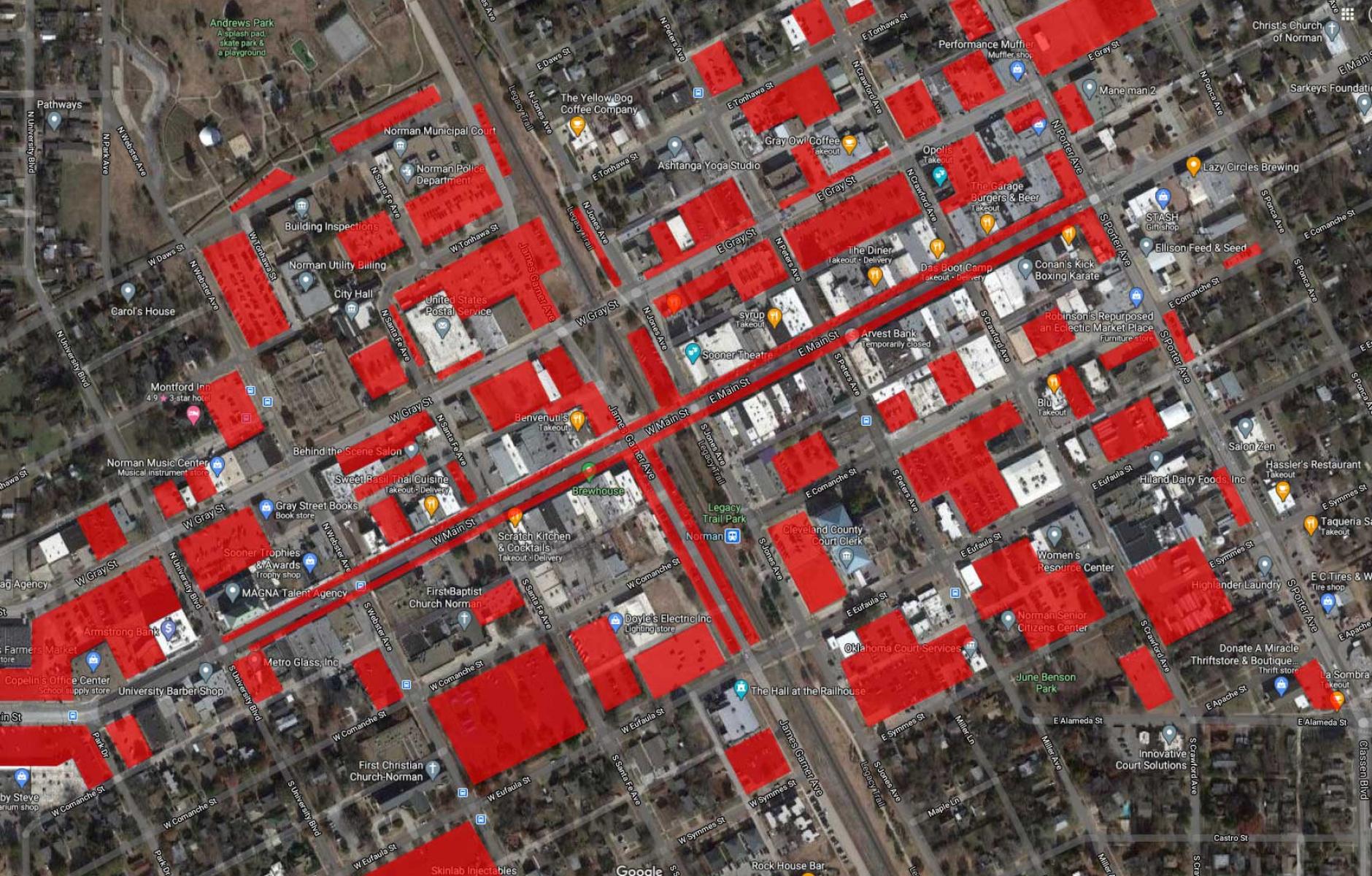
Reforming parking by changing one word
Public Square is highlighting top articles from 2024. The most bang-for-the-buck in land-use regulatory reform is found in the area of parking. A tiny re-write of parking regulations can have a huge impact on a city. Norman, Oklahoma, devised a very efficient way of changing its parking regs. Read about it below:
Of all the 20th Century regulations that tend to prevent good urbanism, parking requirements may be the most easily remedied. Norman, Oklahoma’s third-largest city, located in the middle of the state, came up with a more efficient way to reduce off-street parking requirements than nearly any US city.
The city of 128,000 became the first in Oklahoma to abolish most parking requirements citywide by changing one word in the existing ordinance. “Spaces required” were changed to “spaces recommended” for all uses except single-family and duplexes. The change has the biggest impact downtown and in areas with substantial mixed-use, multifamily, and commercial zoning.
Matthew Peacock, principal architect with Peacock Design, ran for city council on the issue four years ago. The change was adopted in late 2021 and impacts land-use development and urbanism.
“The metrics for observing this change's success are: a decreased need to offset stormwater challenges resulting from required parking, an increased sales tax base (which is the sole funding source for cities in Oklahoma), a reduced distance between buildings making density more prevalent and sprawl less desirable, and removing the obstacles of walkability, accessibility, and overall pedestrian movement through the city,” says Peacock.
The policy change was enacted with little or no citizen or developer pushback, he says. The city excluded single-family and duplex uses to avoid “a negative condition in older neighborhoods where street parking needed to be reserved for small neighborhood businesses, and not for individual parcel owners,” he explains. Norman, located 20 miles south of Oklahoma City and home to the University of Oklahoma, has huge excess parking in its downtown (see satellite photo at top). It also has ample suburban commercial areas fronted or surrounded by seas of parking.

All of these parking lots are open to redevelopment. This has helped boost small, incremental development in the city, Peacock says, with the evidence being recent projects that were only possible with the policy change.
Local developers and designers confirm that view. “We would not have pursued this property if there were parking requirements on it. Because it would not have been feasible based on what potential land there was,” says Cameron Brewer, a local developer, who is working on a commercial project downtown.
“Where the recommended ordinance really comes into a positive effect is when there’s a larger collection of users that can use a shared parking field. That's when the developer needs to really think how can the parking be reduced but still be satisfied. And I think that's a benefit to everybody.” says architect Rick McKinney.
In 2017, Buffalo, New York, eliminated all off-street parking requirements by stating, in the city’s then-newly adopted Green Code, “There are no provisions that establish a minimum number of off-street parking spaces for development.” That change played a role in the city gaining population last decade for the first time in six decades.




